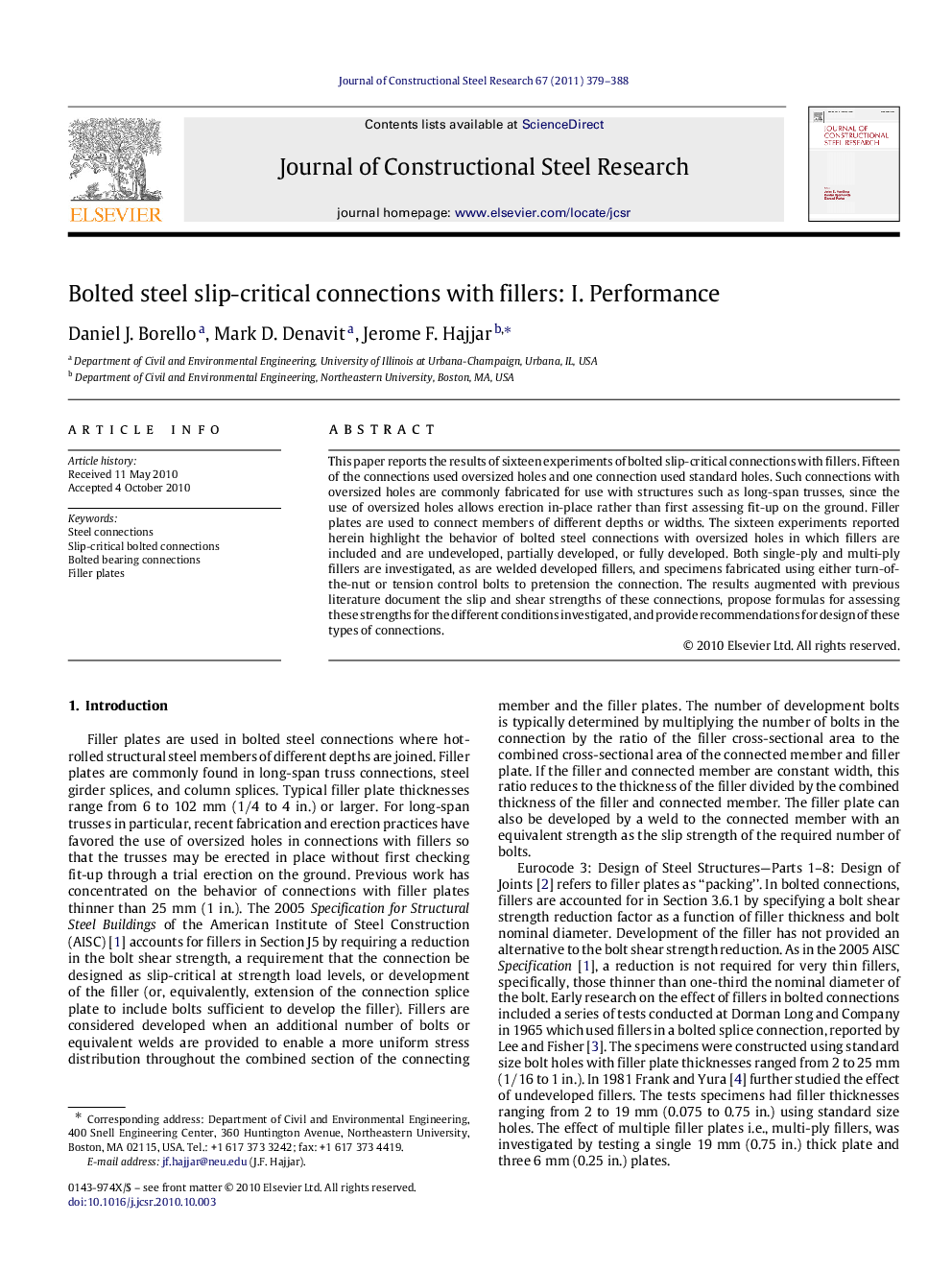| Article ID | Journal | Published Year | Pages | File Type |
|---|---|---|---|---|
| 285363 | Journal of Constructional Steel Research | 2011 | 10 Pages |
This paper reports the results of sixteen experiments of bolted slip-critical connections with fillers. Fifteen of the connections used oversized holes and one connection used standard holes. Such connections with oversized holes are commonly fabricated for use with structures such as long-span trusses, since the use of oversized holes allows erection in-place rather than first assessing fit-up on the ground. Filler plates are used to connect members of different depths or widths. The sixteen experiments reported herein highlight the behavior of bolted steel connections with oversized holes in which fillers are included and are undeveloped, partially developed, or fully developed. Both single-ply and multi-ply fillers are investigated, as are welded developed fillers, and specimens fabricated using either turn-of-the-nut or tension control bolts to pretension the connection. The results augmented with previous literature document the slip and shear strengths of these connections, propose formulas for assessing these strengths for the different conditions investigated, and provide recommendations for design of these types of connections.
Research highlights► Oversized holes do not adversely influence slip resistance of bolted steel connections. ► Resistance to slip in bolted steel connections is reduced as the number of filler plies increases. ► Bolt shear strength in steel connections should be reduced as a function of filler thickness. ► Developing filler plates helps mitigate reductions in slip strength due to multiple filler plies. ► Developing filler plates helps mitigate reductions in bolt shear strength due to thick fillers.
